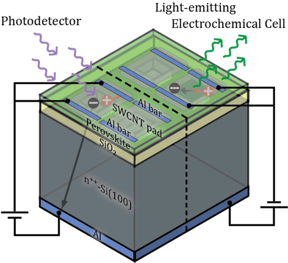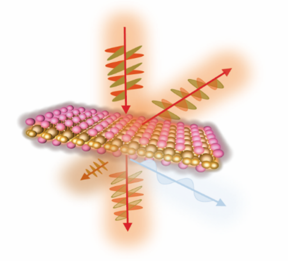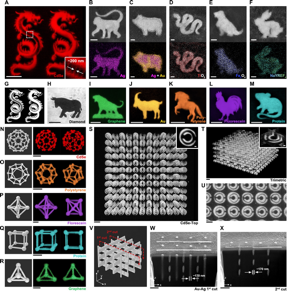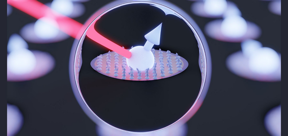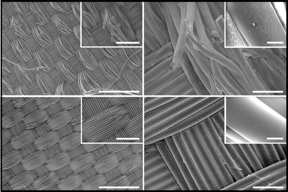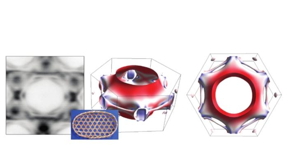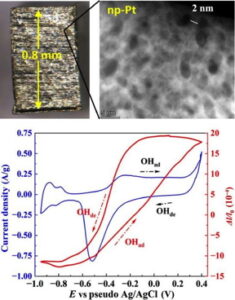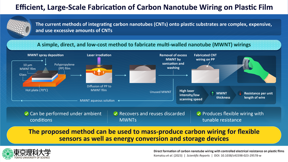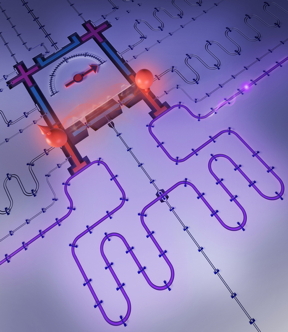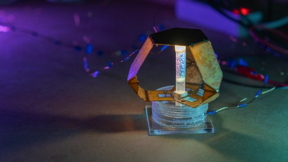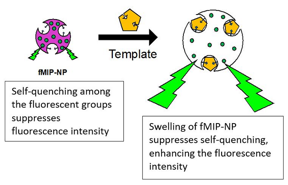Home > Press > New research may make future design of nanotechnology safer with fewer side effects: Study shows a promising strategy to reduce adverse reactions to nanoparticles by using complement inhibitors
Abstract:
“Nanotechnology’s main advantage over conventional medical treatments is its ability to more precisely target tissues, such as cancer cells targeted by chemotherapy. However, when nanoparticles are injected, they can activate part of the immune system called complement,” said senior author Dmitri Simberg, Ph.D., professor of Nanomedicine and Nanosafety at the University of Colorado Skaggs School of Pharmacy on the University of Colorado Anschutz Medical Campus.
New research may make future design of nanotechnology safer with fewer side effects: Study shows a promising strategy to reduce adverse reactions to nanoparticles by using complement inhibitors
Aurora, CO | Posted on October 6th, 2023
Complement is a group of proteins in the immune system that recognize and neutralize bacteria and viruses, including nanoparticles which are foreign to the body. As a result, nanoparticles are attacked by immune cells triggering side effects that include shortness of breath, elevated heart rate, fever, hypotension, and, in rare cases, anaphylactic shock.
“The activation of the immune system after injection of nanoparticles can be challenging to understand and prevent. This research is one step closer to providing a better understanding and a solution for people to receive the benefits of nanoparticles without side effects,” said Simberg, who is also the co-director of the Colorado Center for Nanomedicine and Nanosafety Co-Director.
The researchers say while some progress has been made in mitigating adverse reactions through slow infusion and premedication with steroids and antihistamines, a significant number of people still experience reactions.
“The goal is to prevent, avoid and mitigate adverse reactions and immune activation,” Simberg adds.
To do so, Simberg’s research team collaborated with Michael Holers, M.D., at the University of Colorado School of Medicine and the Medical University of South Carolina to study the impact of complement inhibitors injected with nanoparticles in animal models.
Specifically, the study focuses on an interesting group of complement inhibitors (called “regulators”). The research showed promising results.
Simberg and colleagues observed that the regulators being studied effectively inhibited complement activation by nanoparticles in human serum in vitro and animal models. Specifically, when injected at very low doses, the regulators completely and safely blocked activation of complement by nanoparticles in the animal models used. According to the authors, this is significant because when nanoparticles activate complement, the resulting immune response can not only cause an adverse reaction but it can also reduce the efficacy of nanomedicines.
This research also provides a better understanding of why and how complement regulators could help the body respond more favorably to nanoparticles. The study team observed that of the trillions of nanoparticles entering the blood in a standard injection, only a small fraction activated complement. Complement regulators worked as soon as nanoparticles started activating complement, thereby promptly mitigating immune activation.
“These results suggest we have an exciting opportunity to explore how to further optimize the use of regulators with nanoparticles, with the goal of improving the efficacy and tolerability of multiple nanotechnology-based therapeutics and vaccines,” Simberg said.
The researchers say the next step is to test the complement inhibitors with multiple nanoparticles and in difference disease models to fully understand the potential of this approach with the ultimate goal to apply the research in a clinical setting.
Research reported in this press release was supported by the National Cancer Institute and the National Institute of Allergy and Infectious Diseases of the National Institutes of Health. The content is solely the responsibility of the authors and does not necessarily represent the official views of the National Institutes of Health.
####
About University of Colorado Anschutz Medical Campus
The University of Colorado Anschutz Medical Campus is a world-class medical destination at the forefront of transformative science, medicine, education and patient care. The campus encompasses the University of Colorado health professional schools, more than 60 centers and institutes, and two nationally ranked independent hospitals – UCHealth University of Colorado Hospital and Children’s Hospital Colorado – that treat more than two million adult and pediatric patients each year. Innovative, interconnected and highly collaborative, the University of Colorado Anschutz Medical Campus delivers life-changing treatments, patient care and professional training and conducts world-renowned research fueled by over $690 million in research grants. For more information, visit www.cuanschutz.edu.
For more information, please click here
Contacts:
Julia Milzer
University of Colorado Anschutz Medical Campus
Office: 303-725-0733
Copyright © University of Colorado Anschutz Medical Campus
If you have a comment, please Contact us.
Issuers of news releases, not 7th Wave, Inc. or Nanotechnology Now, are solely responsible for the accuracy of the content.
| Related Links |
| Related News Press |
News and information
![]() Observation of left and right at nanoscale with optical force October 6th, 2023
Observation of left and right at nanoscale with optical force October 6th, 2023
![]() The efficient perovskite cells with a structured anti-reflective layer – another step towards commercialization on a wider scale October 6th, 2023
The efficient perovskite cells with a structured anti-reflective layer – another step towards commercialization on a wider scale October 6th, 2023
![]() Super-efficient laser light-induced detection of cancer cell-derived nanoparticles: Skipping ultracentrifugation, detection time reduced from hours to minutes! October 6th, 2023
Super-efficient laser light-induced detection of cancer cell-derived nanoparticles: Skipping ultracentrifugation, detection time reduced from hours to minutes! October 6th, 2023
![]() Successful morphing of inorganic perovskites without damaging their functional properties October 6th, 2023
Successful morphing of inorganic perovskites without damaging their functional properties October 6th, 2023
Possible Futures
![]() Discovery made by University of Warsaw scientists may enable network interface for quantum computers October 6th, 2023
Discovery made by University of Warsaw scientists may enable network interface for quantum computers October 6th, 2023
![]() The medicine of the future could be artificial life forms October 6th, 2023
The medicine of the future could be artificial life forms October 6th, 2023
![]() Successful morphing of inorganic perovskites without damaging their functional properties October 6th, 2023
Successful morphing of inorganic perovskites without damaging their functional properties October 6th, 2023
![]() Interdisciplinary: Rice team tackles the future of semiconductors Multiferroics could be the key to ultralow-energy computing October 6th, 2023
Interdisciplinary: Rice team tackles the future of semiconductors Multiferroics could be the key to ultralow-energy computing October 6th, 2023
Nanomedicine
![]() Super-efficient laser light-induced detection of cancer cell-derived nanoparticles: Skipping ultracentrifugation, detection time reduced from hours to minutes! October 6th, 2023
Super-efficient laser light-induced detection of cancer cell-derived nanoparticles: Skipping ultracentrifugation, detection time reduced from hours to minutes! October 6th, 2023
![]() The medicine of the future could be artificial life forms October 6th, 2023
The medicine of the future could be artificial life forms October 6th, 2023
![]() New compound unleashes the immune system on metastases September 8th, 2023
New compound unleashes the immune system on metastases September 8th, 2023
Discoveries
![]() Super-efficient laser light-induced detection of cancer cell-derived nanoparticles: Skipping ultracentrifugation, detection time reduced from hours to minutes! October 6th, 2023
Super-efficient laser light-induced detection of cancer cell-derived nanoparticles: Skipping ultracentrifugation, detection time reduced from hours to minutes! October 6th, 2023
![]() A new qubit platform is created atom by atom October 6th, 2023
A new qubit platform is created atom by atom October 6th, 2023
![]() Twisted science: NIST researchers find a new quantum ruler to explore exotic matter October 6th, 2023
Twisted science: NIST researchers find a new quantum ruler to explore exotic matter October 6th, 2023
![]() Discovery made by University of Warsaw scientists may enable network interface for quantum computers October 6th, 2023
Discovery made by University of Warsaw scientists may enable network interface for quantum computers October 6th, 2023
Announcements
![]() Observation of left and right at nanoscale with optical force October 6th, 2023
Observation of left and right at nanoscale with optical force October 6th, 2023
![]() The efficient perovskite cells with a structured anti-reflective layer – another step towards commercialization on a wider scale October 6th, 2023
The efficient perovskite cells with a structured anti-reflective layer – another step towards commercialization on a wider scale October 6th, 2023
![]() Super-efficient laser light-induced detection of cancer cell-derived nanoparticles: Skipping ultracentrifugation, detection time reduced from hours to minutes! October 6th, 2023
Super-efficient laser light-induced detection of cancer cell-derived nanoparticles: Skipping ultracentrifugation, detection time reduced from hours to minutes! October 6th, 2023
![]() A new qubit platform is created atom by atom October 6th, 2023
A new qubit platform is created atom by atom October 6th, 2023
Interviews/Book Reviews/Essays/Reports/Podcasts/Journals/White papers/Posters
![]() Observation of left and right at nanoscale with optical force October 6th, 2023
Observation of left and right at nanoscale with optical force October 6th, 2023
![]() The efficient perovskite cells with a structured anti-reflective layer – another step towards commercialization on a wider scale October 6th, 2023
The efficient perovskite cells with a structured anti-reflective layer – another step towards commercialization on a wider scale October 6th, 2023
![]() Super-efficient laser light-induced detection of cancer cell-derived nanoparticles: Skipping ultracentrifugation, detection time reduced from hours to minutes! October 6th, 2023
Super-efficient laser light-induced detection of cancer cell-derived nanoparticles: Skipping ultracentrifugation, detection time reduced from hours to minutes! October 6th, 2023
![]() A new qubit platform is created atom by atom October 6th, 2023
A new qubit platform is created atom by atom October 6th, 2023
Safety-Nanoparticles/Risk management
![]() Tests find no free-standing nanotubes released from tire tread wear September 8th, 2023
Tests find no free-standing nanotubes released from tire tread wear September 8th, 2023
![]() Billions of nanoplastics released when microwaving baby food containers: Exposure to plastic particles kills up to 75% of cultured kidney cells July 21st, 2023
Billions of nanoplastics released when microwaving baby food containers: Exposure to plastic particles kills up to 75% of cultured kidney cells July 21st, 2023
![]() Advances in nanotechnology application in biosafety materials A crucial response to COVID-19 pandemic June 9th, 2023
Advances in nanotechnology application in biosafety materials A crucial response to COVID-19 pandemic June 9th, 2023
![]() Underwater movement sensor alerts when a swimmer might be drowning October 7th, 2022
Underwater movement sensor alerts when a swimmer might be drowning October 7th, 2022
Nanobiotechnology
![]() Super-efficient laser light-induced detection of cancer cell-derived nanoparticles: Skipping ultracentrifugation, detection time reduced from hours to minutes! October 6th, 2023
Super-efficient laser light-induced detection of cancer cell-derived nanoparticles: Skipping ultracentrifugation, detection time reduced from hours to minutes! October 6th, 2023
![]() The medicine of the future could be artificial life forms October 6th, 2023
The medicine of the future could be artificial life forms October 6th, 2023
![]() New compound unleashes the immune system on metastases September 8th, 2023
New compound unleashes the immune system on metastases September 8th, 2023
- SEO Powered Content & PR Distribution. Get Amplified Today.
- PlatoData.Network Vertical Generative Ai. Empower Yourself. Access Here.
- PlatoAiStream. Web3 Intelligence. Knowledge Amplified. Access Here.
- PlatoESG. Carbon, CleanTech, Energy, Environment, Solar, Waste Management. Access Here.
- PlatoHealth. Biotech and Clinical Trials Intelligence. Access Here.
- Source: http://www.nanotech-now.com/news.cgi?story_id=57398
- :has
- :is
- :not
- $UP
- 10
- 21st
- 60
- 6th
- 7th
- 8th
- 9th
- a
- ability
- According
- accuracy
- activated
- activating
- Activation
- Adds
- Adult
- ADvantage
- adverse
- After
- alerts
- also
- an
- and
- animal
- Another
- Application
- Apply
- approach
- ARE
- artificial
- AS
- At
- atom
- Aurora
- author
- authors
- avoid
- Baby
- Bacteria
- BE
- because
- been
- being
- benefits
- Better
- blocked
- blood
- body
- Breath
- but
- by
- called
- Campus
- CAN
- Cancer
- Cancer cells
- care
- Carolina
- cases
- Cause
- Cells
- Center
- Centers
- CGI
- challenging
- chemotherapy
- Children
- click
- Clinical
- closer
- CO
- collaborated
- collaborative
- colleagues
- Colorado
- COM
- comment
- commercialization
- Complement
- completely
- Compound
- conducts
- Containers
- content
- conventional
- could
- COVID-19
- created
- crucial
- damaging
- delivers
- Design
- destination
- Detection
- develop
- diagnosis
- difference
- Disease
- diseases
- dna
- do
- does
- each
- Early
- Education
- effectively
- effects
- efficacy
- efficient
- elevated
- enable
- encompasses
- end
- entering
- Ether (ETH)
- exciting
- Exotic
- experience
- explore
- Exposure
- Fever
- fewer
- Find
- focuses
- food
- For
- forefront
- foreign
- fraction
- from
- fueled
- fully
- functional
- further
- future
- gif
- goal
- grants
- Group
- Have
- Health
- Heart
- help
- High
- highly
- Hospital
- hospitals
- HOURS
- How
- How To
- However
- http
- HTTPS
- human
- if
- immune
- Immune system
- Impact
- improving
- in
- Inc.
- include
- Including
- independent
- Infectious diseases
- information
- infusion
- innovative
- Institute
- interconnected
- interesting
- Interface
- IT
- ITS
- July
- june
- Key
- kidney
- Kills
- laser
- layer
- left
- Life
- links
- Low
- made
- Main
- make
- materials
- May..
- medical
- medicine
- Michael
- might
- million
- Mitigate
- mitigating
- models
- more
- movement
- multiple
- Nanomedicine
- nanotechnology
- National
- National Institutes of Health
- nationally
- necessarily
- net
- network
- New
- news
- next
- nist
- no
- novel
- now
- number
- observed
- october
- of
- official
- on
- ONE
- only
- Opportunity
- Optimize
- or
- over
- part
- patient
- patient care
- patients
- People
- pharmacy
- PHP
- plastic
- platform
- plato
- Plato Data Intelligence
- PlatoData
- please
- Post
- posted
- potential
- precisely
- press
- Press Release
- prevent
- professional
- Professor
- Progress
- promising
- Proteins
- provides
- providing
- Quantum
- Qubit
- ranked
- RARE
- Rate
- reaction
- reactions
- receive
- recognize
- reduce
- Reduced
- Regulators
- release
- released
- Releases
- Reported
- represent
- research
- researchers
- Respond
- response
- responsibility
- responsible
- result
- resulting
- Results
- return
- Rice
- right
- s
- safely
- safer
- Said
- Save
- say
- School
- Schools
- Science
- scientists
- Search
- Semiconductors
- senior
- September
- Serum
- setting
- Share
- showed
- Shows
- side
- significant
- slow
- small
- So
- solely
- solution
- some
- Soon
- South
- South carolina
- specifically
- standard
- start
- started
- Step
- Still
- Strategy
- structured
- studied
- Study
- submit
- such
- suggest
- Supported
- system
- Tackles
- Target
- targeted
- team
- test
- than
- that
- The
- The Future
- their
- therapeutics
- thereby
- they
- this
- Through
- time
- tire
- tissues
- to
- towards
- Training
- transformative
- tread
- treat
- treatments
- triggering
- trillions
- two
- ultimate
- understand
- understanding
- university
- unleashes
- us
- use
- used
- using
- vaccines
- very
- views
- viruses
- Visit
- Warsaw
- was
- Wave
- we
- when
- which
- while
- WHO
- why
- wider
- with
- without
- worked
- world-class
- world-renowned
- Yahoo
- year
- you
- zephyrnet











